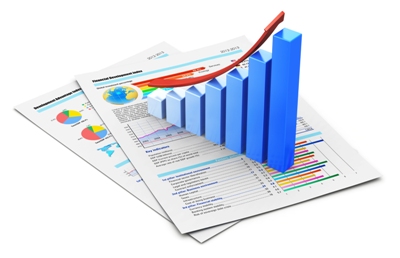 It goes without saying that every successful business needs to be in full control of their finances - both income and expenses. To thrive in the current economic climate, businesses must make effective use of all the data their business produces.
It goes without saying that every successful business needs to be in full control of their finances - both income and expenses. To thrive in the current economic climate, businesses must make effective use of all the data their business produces.
Although costs should not be a businesses No. 1 priority, it is paramount that business owners grasp the positive financial impact detailed analysis of their cost and operational performance data can have in both the short and long term.
In a recent survey conducted by BARC, data analysis has been shown to increase revenues up to 8% and reduce costs of business by 10%, arguing that data analysis is the key to deriving meaningful insights in financial data by identifying patterns, opportunities for cost-saving and measuring the value of your business.
Although simple in theory, it is harder to put into practice.
Huge amounts of unrefined financial data filters into your business every day, whether it be from financial systems, through emails, invoices, or via the spreadsheets everyone uses independently. Keeping track of all these numbers is a mammoth task for your financial team and near impossible to interpret.
According to a recent study by Forrester Research, most companies only ever analyse 12% of the data they collect – therefore making decisions with just a fraction of the insight they have available.
Without a process and platform for collecting, managing and interpreting all this data, businesses cannot take advantage of the insights on offer.
And you don’t need wildly expensive ERP systems and armies of internal data analyst to obtain this value. Technology and services businesses can do the work for you, providing the means to gather all financial information from disparate sources, then analyse the data and present it back in simple visual formats which are easy to interpret and understand.
In giving budget holders complete but simple visibility of who, why and on what money is being spent, it becomes straightforward to identify where significant savings and efficiencies can be made and where opportunities are being lost.
One of the main benefits of analysing data is that you can take action to identify and drive opportunities for efficiency. Processes can be simplified, human error reduced, productivity increased and usage optimised. You will save money and time, whilst simultaneously increasing profits.
For example;
- Analysis and visualisation of payment versus contracted payment terms allows the finance team to optimise usage of on and off-invoice discounts and improve working capital
- Visibility of invoice volumes, timings, PO data and sign-offs visualises the P2P bottlenecks allowing simplification and efficiency decisions
- Spend analytics helps procurement negotiate better, but also identifies best practices and changes consumption behaviour of the users
- Centralising HR data (why people join, exit interviews, time on current role, how long been reporting to the same person, performance) to identify employees at risk of leaving
In short, with the right insight at the right time, you will be able to make the important operational and strategic decisions based on real-time factual data. Complete visibility of your business costs is essential to ensuring that your business is running smoothly and efficiently. It gives businesses the competitive edge they need in order to thrive and expand in the current economic climate.
Subscribe to
FP&A Trends Digest

We will regularly update you on the latest trends and developments in FP&A. Take the opportunity to have articles written by finance thought leaders delivered directly to your inbox; watch compelling webinars; connect with like-minded professionals; and become a part of our global community.
